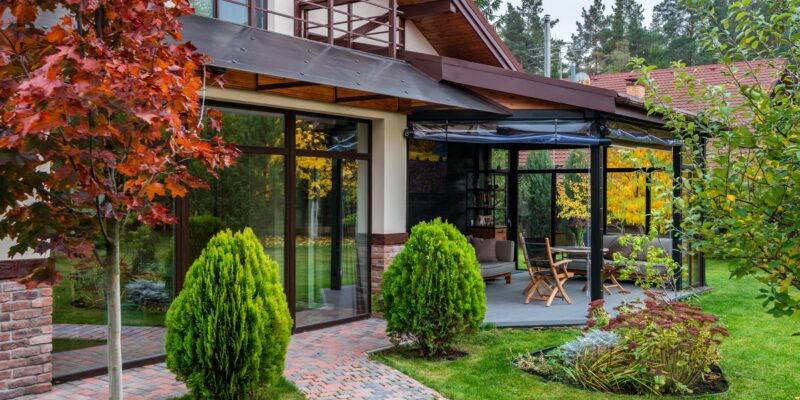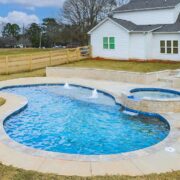Facade windows are not just architectural elements; they serve as guardians of energy conservation, employing innovative technologies to minimize heat transfer and maximize insulation. By effectively sealing the building envelope, these windows play a vital role in reducing energy consumption, improving thermal comfort and lowering carbon footprints.
The science of energy efficiency
Facade windows apply state-of-the-art technologies to enhance thermal performance and minimize heat transfer. Through the use of insulation materials like low-conductivity frames and multiple glazing layers filled with insulating gases, these windows create a protective shield against external temperature variations. As a result, they reduce the reliance on heating and cooling systems, leading to significant energy savings.
Moreover, specialized coatings, such as low-emissivity coatings are applied to the glass surfaces. These coatings allow visible light to pass through while reflecting infrared radiation, ensuring comfortable indoor temperatures by minimizing heat gain in hot months and heat loss in colder seasons. The precise engineering and scientific principles behind window facade play an important role in conserving energy, mitigating environmental impact and reducing utility costs.
Maximizing thermal performance
Facade windows utilize state-of-the-art insulation technologies to minimize heat transfer and establish a robust, well-insulated divide between the indoor and outdoor spaces. By making use of premium materials like low-conductivity frames and advanced glazing systems, they effectively prevent thermal bridging and diminish energy loss.
The inclusion of multiple glazing layers filled with insulating gases, such as argon or krypton further amplifies their insulation capabilities, adding an extra layer of thermal resistance. Through the seamless integration of these insulation innovations, facade windows efficiently reduce heat loss in colder months and curtail undesirable heat gain during warmer seasons.
Energy-efficient glazing
In energy-efficient glazing, low-E (low-emissivity) coatings play a vital role by minimizing heat transfer through the glass. These microscopically thin coatings are applied to the surface of the glass, selectively allowing visible light to enter while reflecting infrared radiation. As a result, indoor spaces remain comfortably insulated, reducing the need for excessive heating or cooling.
An option for energy-efficient glazing that is different from the one described above is triple pane windows, which consist of three layers of glass separated by insulating spaces. These additional layers and pockets of air or gas between them significantly improve insulation, reducing heat loss and enhancing soundproofing properties.
By exploring these energy-efficient glazing options, facade windows can optimize thermal performance, minimize energy consumption and create more sustainable living spaces.
Climate control
By regulating heat transfer, facade windows contribute to maintaining comfortable temperatures year-round. During hot summers, advanced glazing technologies and coatings prevent solar heat gain, reducing the need for excessive cooling. Similarly, in colder months, the windows’ insulation properties help retain warmth indoors, minimizing heat loss.
While effectively controlling the impact of external weather conditions, facade windows create a more stable and comfortable indoor climate, reducing the reliance on heating and cooling systems. This not only enhances the comfort of occupants, but also contributes to energy savings and a reduced environmental footprint. With efficient climate control provided by facade windows, homeowners can enjoy optimal comfort and a more sustainable living space.
Smart solutions
With the advent of the Internet of Things (IoT), facade windows can be integrated into smart home systems, enabling seamless control and optimization of energy usage. Smart sensors and automation allow the windows to respond intelligently to changing weather conditions, adjusting shading or ventilation settings accordingly.
Smart window systems can be synchronized with other energy-saving devices, such as thermostats and lighting controls, to create a holistic and interconnected ecosystem. Homeowners can remotely monitor and manage their windows’ energy performance through smartphone apps, empowering them to make informed decisions about their use of energy.
Financial savings
Energy-efficient facade windows play a helpful role in reducing utility expenses by minimizing the need for excessive heating, cooling, and artificial lighting. Their advanced insulation properties, high-quality glazing and low-emissivity coatings effectively trap heat indoors during winter and prevent heat gain during summer, reducing the reliance on HVAC systems. As a result, homeowners can enjoy substantial savings on energy bills throughout the year.
The enhanced thermal performance of facade windows reduces the strain on heating and cooling equipment, potentially extending their lifespan and minimizing maintenance and replacement costs.
Green building certifications
Green building certifications, such as LEED (Leadership in Energy and Environmental Design), recognize buildings that meet rigorous standards of sustainability and environmental performance. Facade windows contribute significantly to achieving these certifications by enhancing energy efficiency, reducing carbon emissions and promoting a healthier indoor environment.
The energy-saving features of facade windows, including advanced glazing technologies, insulation innovations and smart control systems align with the requirements of green building standards. Also, facade windows allow in ample natural light, reducing the need for artificial lighting and improving the well-being of occupants.
By integrating energy-efficient facade windows into building design, developers and homeowners can leverage their sustainable attributes to earn green building certifications, demonstrating a commitment to environmental stewardship and responsible construction practices.














Comments